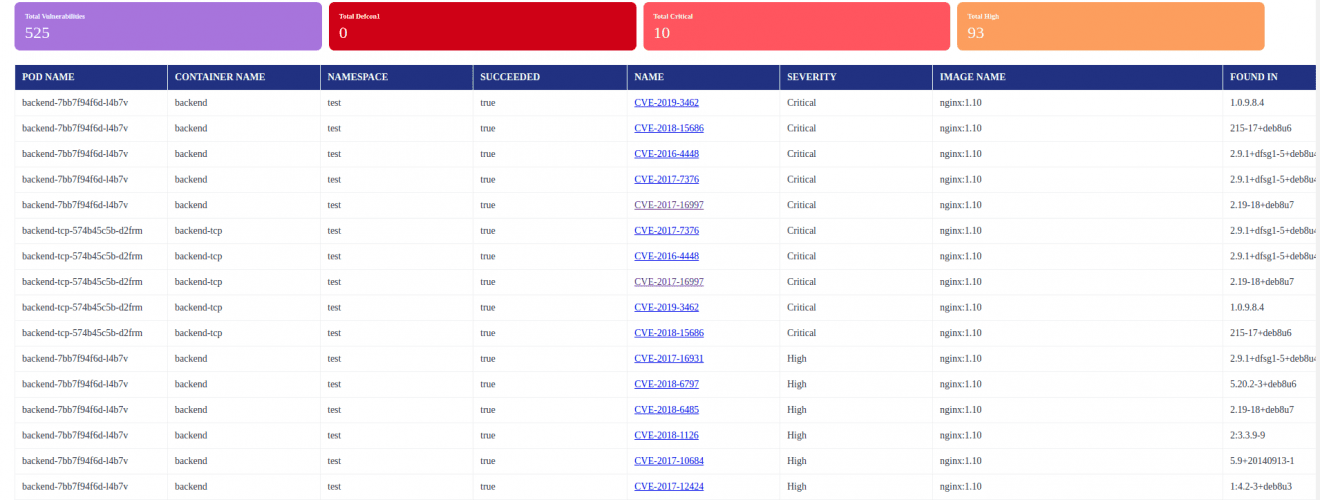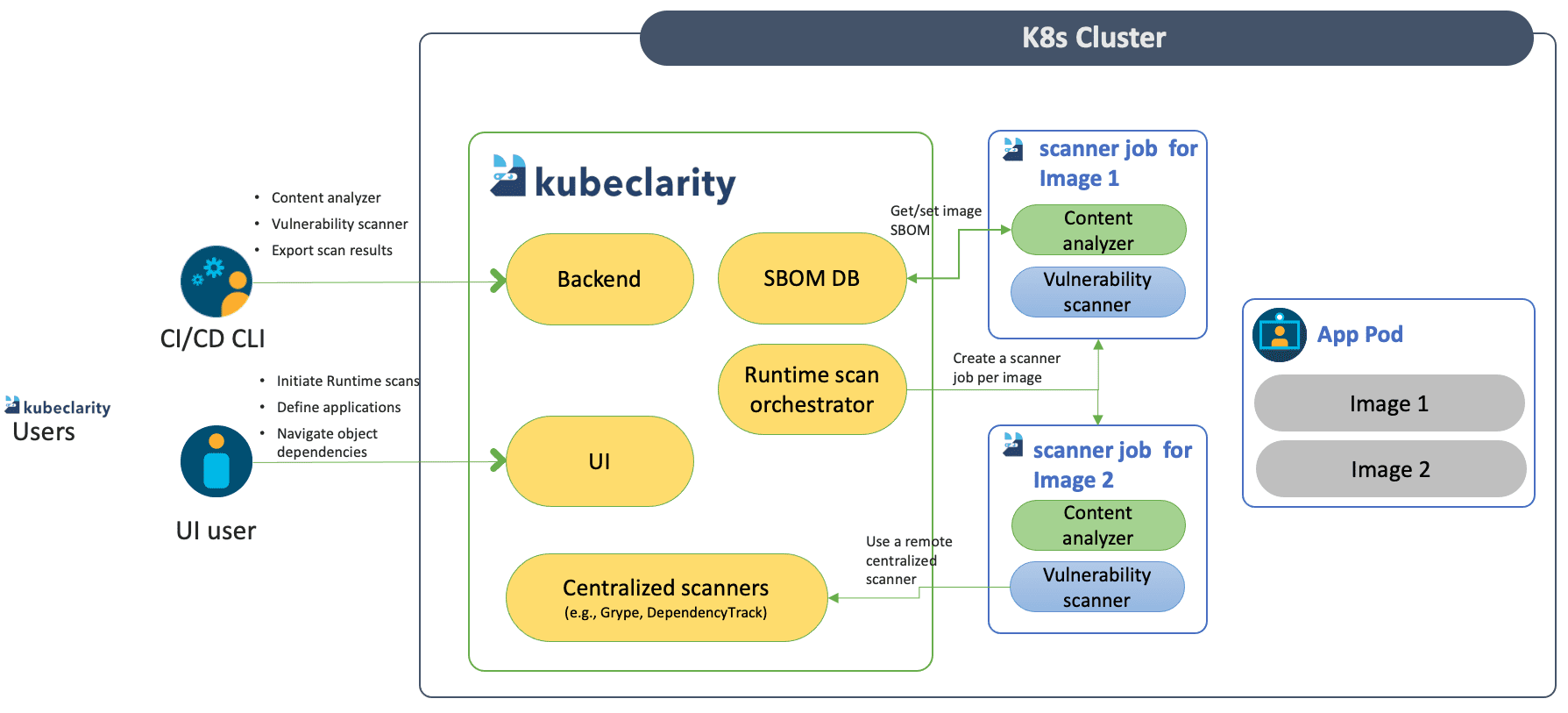kubeclarity v2.23 releases: tool for detection and management of (SBOM) and vulnerabilities of container images and filesystems

kubeclarity
KubeClarity is a tool for the detection and management of Software Bill Of Materials (SBOM) and vulnerabilities of container images and filesystems. It scans both runtime K8s clusters and CI/CD pipelines for enhanced software supply chain security.
SBOM & vulnerability detection challenges
- Effective vulnerability scanning requires an accurate Software Bill Of Materials (SBOM) detection:
- Various programming languages and package managers
- Various OS distributions
- Package dependency information is usually stripped upon build
- Which one is the best scanner/SBOM analyzer?
- What should we scan: Git repos, builds, container images or runtime?
- Each scanner/analyzer has its own format – how to compare the results?
- How to manage the discovered SBOM and vulnerabilities?
- How are my applications affected by a newly discovered vulnerability?
Solution
- Separate vulnerability scanning into 2 phases:
- Content analysis to generate SBOM
- Scan the SBOM for vulnerabilities
- Create a pluggable infrastructure to:
- Run several content analyzers in parallel
- Run several vulnerability scanners in parallel
- Scan and merge results between different CI stages using KubeClarity CLI
- Runtime K8s scan to detect vulnerabilities discovered post-deployment
- Group scanned resources (images/directories) under defined applications to navigate the object tree dependencies (applications, resources, packages, vulnerabilities)
Features
- Dashboard
- Fixable vulnerabilities per severity
- Top 5 vulnerable elements (applications, resources, packages)
- New vulnerabilities trends
- Package count per license type
- Package count per programming language
- General counters
- Applications
- Automatic application detection in K8s runtime
- Create/edit/delete applications
- Per application, navigation to related:
- Resources (images/directories)
- Packages
- Vulnerabilities
- Licenses in use by the resources
- Application Resources (images/directories)
- Per resource, navigation to related:
- Applications
- Packages
- Vulnerabilities
- Per resource, navigation to related:
- Packages
- Per package, navigation to related:
- Applications
- Linkable list of resources and the detecting SBOM analyzers
- Vulnerabilities
- Per package, navigation to related:
- Vulnerabilities
- Per vulnerability, navigation to related:
- Applications
- Resources
- List of detecting scanners
- Per vulnerability, navigation to related:
- K8s Runtime scan
- Automatic detection of target namespaces
- Scan progress and result navigation per affected element (applications, resources, packages, vulnerabilities)
- CLI (CI/CD)
- SBOM generation using multiple integrated content analyzers (Syft, cyclonedx-gomod)
- SBOM/image/directory vulnerability scanning using multiple integrated scanners (Grype, Dependency-track)
- Merging of SBOM and vulnerabilities across different CI/CD stages
- Export results to KubeClarity backend
- API
- The API for KubeClarity can be found here
High-level architecture

Changelog v2.23
- d485744 feat(helm): postgres credentials moved to secret (#563)
- 6ef30a4 fex(helm): remove
helm.sh/hookannotations (#564)
Download
Copyright 2020 Portshift
Source: https://github.com/openclarity/






